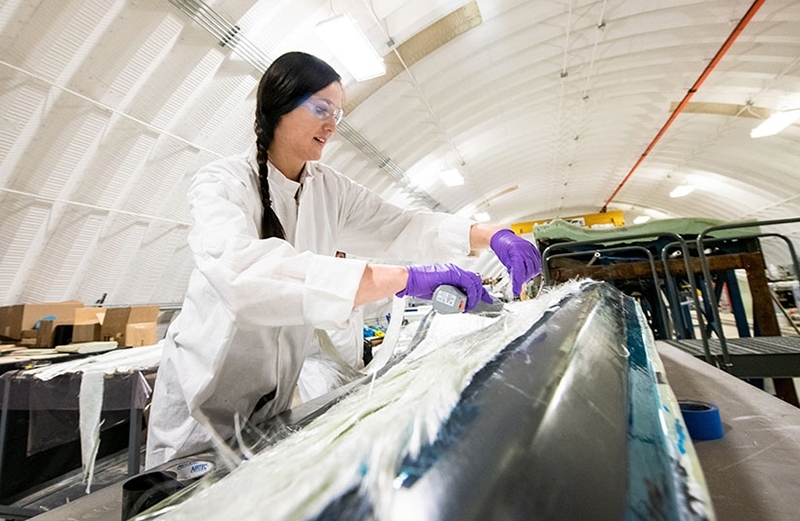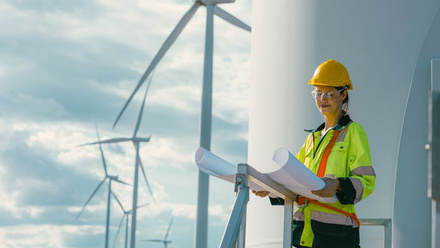Thermoplastic resin offers turbine blades recyclability
Switching to thermoplastic resin for wind turbine blades could deliver lower embodied energy for manufacture, higher damping and potential for recyclability.

A thermoplastic composite wind turbine blade made with Elium resin performs comparably in mechanical performance to a thermoset epoxy blade, say scientists at the US National Renewable Energy Laboratory (NREL).
Current wind turbines are usually made with composite materials such as fibreglass infused with a thermoset resin. Additional heat for curing is required when an epoxy thermoset resin is used.
The team at NREL is exploring the cost benefits of using a thermoplastic resin in blades by creating a technoeconomic model. They believe the process for manufacturing thermoplastic resins requires less manual labour and could reduce costs of production by around 5%.
The researchers have tested the theory using Elium resin – a liquid thermoplastic resin that can be processed like traditional thermosets – working with partners at chemicals company Arkema in France. “For the wind blade infusions, Elium resin can be cured at room temperature without the need for post-cure,” says Dana Swan, Technical Development Manager of Elium Resin at Arkema.
“The resulting polymer is thermoplastic, which offers many advantages including high elastic modulus and post-processing welding and recycling.”
The Elium resin, Swan notes, can be recycled through two methods – “grinding and compounding of the material to repurpose spent blades in other composite applications, and pyrolysis of the blade to recover the monomers and fibre and repurpose both in other applications”.
She adds, “When curing, thermoset materials form crosslinked networks that essentially lock the polymer in place. Thermoplastic materials…are made up of high molecular weight long-chain polymers, which do not have the tight crosslinks and are able to move more freely than the thermoset polymers,” aiding recyclability.
In addition, “The room temperature cure of Elium resin and the elimination of a post-cure results in faster cycle times, which translates to more blade output per year, and lower energy needs since the moulds don’t need to be heated to perform cure or post-cure.”
The thermoplastic resin has been tested first by creating a nine-metre demonstrator blade. A 13-metre thermoplastic composite blade then followed on tooling that was near-identical to an epoxy blade. This work has been completed by conducting a side-by-side comparison of the blades.
“The results showed the thermoplastic blade could be processed faster with less energy – however, the resulting mechanical properties achieved by the blade were similar to those shown by the epoxy blade,” Swan observes. “Higher damping was shown for the thermoplastic blade.” According to the study, published in Renewable Energy, the damping in different directions is five or more times higher for the thermoplastic blade than the epoxy one.
The team’s next step is to work with manufacturers to use Elium resin in the current or next generation of blade manufacturing.







